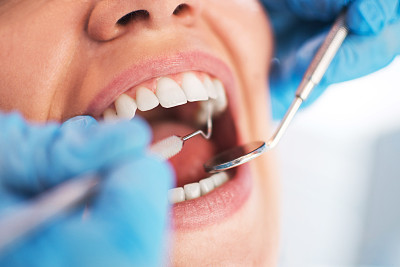The Importance of Tooth Extraction Understanding the Process Benefits and Aftercare Tips for a Smooth Recovery
Summary: Tooth extraction is an essential dental procedure that addresses various oral health issues, from severe decay to overcrowding. Understanding the extraction process itself, its multiple benefits, and the proper aftercare required can significantly enhance the recovery experience. This article provides a comprehensive overview of the importance of tooth extraction, including what to expect during the procedure, how it can improve dental health, and crucial aftercare tips to ensure a smooth and effective recovery. By the end, readers will gain valuable insights into why tooth extraction can be vital for maintaining overall oral hygiene and health.
1. Understanding the Tooth Extraction Process

The process of tooth extraction involves several steps that ensure the procedure is carried out smoothly and efficiently. Initially, a comprehensive dental examination is conducted to evaluate the tooths condition and determine the need for extraction. Digital X-rays may be used to provide a detailed view of the tooths structure and its roots, helping the dentist to plan the extraction appropriately.
Once the dentist confirms the need for extraction, the patient is usually given anesthesia to minimize discomfort. Depending on the complexity of the extraction, local anesthesia might be sufficient, or sedation may be administered for more complicated cases. The actual extraction involves the dentist loosening the tooth from its socket, which may require careful manipulation to avoid damaging surrounding tissues.
After successfully removing the tooth, the dentist will provide instructions for care and may place a gauze pad over the extraction site to control bleeding. Understanding these steps can help alleviate anxiety and prepare patients for what’s to come during their dental appointment.
2. Benefits of Tooth Extraction
Tooth extraction can yield profound benefits for a patients overall dental health. One of the primary advantages is the elimination of pain and discomfort caused by an infected or decayed tooth. By removing the problematic tooth, patients often experience immediate relief and an improved quality of life.
Another significant benefit pertains to overcrowded teeth. In some cases, overcrowding can lead to misalignment, affecting the functionality and aesthetics of a persons smile. Extracting certain teeth may facilitate orthodontic treatments, such as braces, resulting in a straighter and healthier smile in the long term.
Additionally, tooth extraction plays a crucial role in preventing the spread of infection. An infected tooth can lead to serious complications if not addressed promptly. By undertaking extraction, the risk of further complications decreases significantly, preserving the overall health of the jaw and surrounding teeth.
3. Essential Aftercare Tips for Recovery
Proper aftercare following a tooth extraction is vital for a smooth recovery. Following the procedure, patients should adhere to the dental professionals recommendations, particularly in managing pain and controlling bleeding. Utilizing prescribed pain medications and applying cold compresses to the outside of the mouth can greatly alleviate discomfort and reduce swelling.
It is also crucial for patients to maintain oral hygiene while being cautious around the extraction site. Gentle rinsing with warm saltwater can help clean the area without disturbing the clot that forms, which is important for healing. Patients should avoid vigorous rinsing or using straws, as these actions can dislodge the clot and lead to a painful condition known as dry socket.
Moreover, dietary choices after extraction significantly impact recovery. Patients are encouraged to stick to soft foods initially and gradually reintroduce more solid foods as healing progresses. Staying hydrated and avoiding hot foods or beverages can also support a faster recovery.
4. When to Seek Professional Help After Extraction
While most tooth extractions heal without complications, it is essential to know when to seek professional help. If excessive bleeding persists beyond a few hours or becomes more severe, contacting the dentist is paramount. This could indicate a problem that requires immediate intervention.
Signs of infection, such as fever, persistent swelling, or discharge from the extraction site, also warrant a visit to the dentist. Early detection and treatment can prevent complications that might extend recovery time or lead to more severe health issues.
Additionally, patients experiencing extreme pain that seems to escalate rather than diminish over time should reach out to their dental provider. This could signal a possible complication, such as dry socket or an infection, necessitating further evaluation and treatment.
Summary:
In conclusion, tooth extraction is a vital procedure that can improve overall oral health by alleviating pain, preventing infection, and aiding in orthodontic treatments. Understanding the process, recognizing its benefits, and adhering to aftercare tips ensure that patients experience a smoother recovery. By being proactive and attentive to their post-extraction care, individuals can enjoy the long-term benefits of improved dental health.
This article is compiled by Vickong Dental and the content is for reference only.



